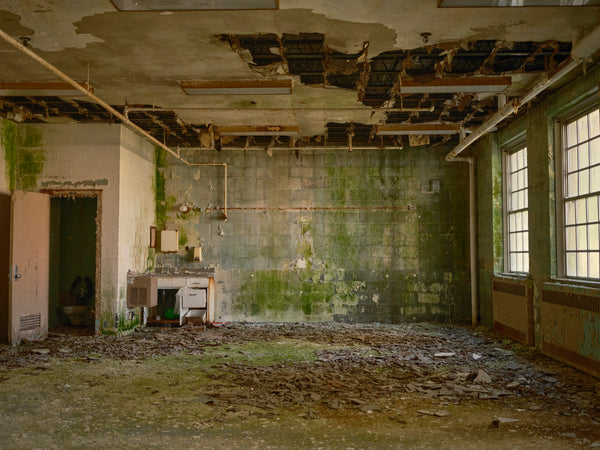Fairfield State Hospital
In June of 1929, an act providing for the establishment of the Fairfield State Hospital (later known as Fairfield Hills Hospital) in Connecticut was passed and construction of the buildings on the 800+ acre campus began. Three years later, in 1933, the hospital opened its doors and welcomed its first patients, 32 men. At some point over the next 60 years, that number peaked at just over 4,000.
In 1941 electric shock therapy was introduced to patients. That same year, five attendants at Fairfield State Hospital were charged with beating a patient to death. Two of the attendants were convicted of manslaughter and one with assault.
Quality patient care is the cornerstone of any 5-Star Hospital. Patients in crisis enter through hospital doors seeking comfort, compassion, a sense of relief. Hospitals with decent upstanding reputations typically tout "exceptional quality care" as their "top priority" reiterated in their mission statement emblazoned in bronze and mounted on a plaque above the entranceway.
"When it comes to providing exceptional exceptional care, Seattle Grace outperforms all other hospitals. The difference is, WE DELIVER."
"If a competent qualified staff and exceptional quality care are things you look for in a hospital, then look no further than Grey Sloan Memorial."
"Cook County General Hospital: Consistently delivering superior care with lower than average mortality rates."
A survey on ward staffing patterns conducted in the late 1970's at three Connecticut state hospitals indicated a level and quality of care considerably less than exceptional. The data collected, or the sets of data collection, revealed that the majority of patient care was being delivered by nonprofessionals. In the summer of '78, approximately 800 inpatients at Fairfield Hills Hospital were being cared for by an average of 9.4 nurses, 55.3 psychiatric aides, and .20 (less than one) psychiatric social workers or psychologists per shift, per day, on any given ward. Not the kind of patient-staff ratio you really want hangin' on billboard over some busy freeway.

There were a limited number of American medical students opting for psychiatry in the 1970's. Those who graduated and entered the field were choosing employment in privately-funded general hospitals, not state-run facilities like Fairfield Hills with low, limited, or restricted funding.

Fairfield Hills, like other state mental hospitals, suffered a significantly high turnover rate in filled psychiatric personnel positions. High turnover rates negatively impacted the quality of care on the various wards. This led to an increasing reliance on drug therapy as primary treatment and a more custodial type of care for the patients.

Psychotropic drug therapy became the primary therapy in state hospitals. Patients became dependent on the drugs, hospitals became dependent on their application.
















